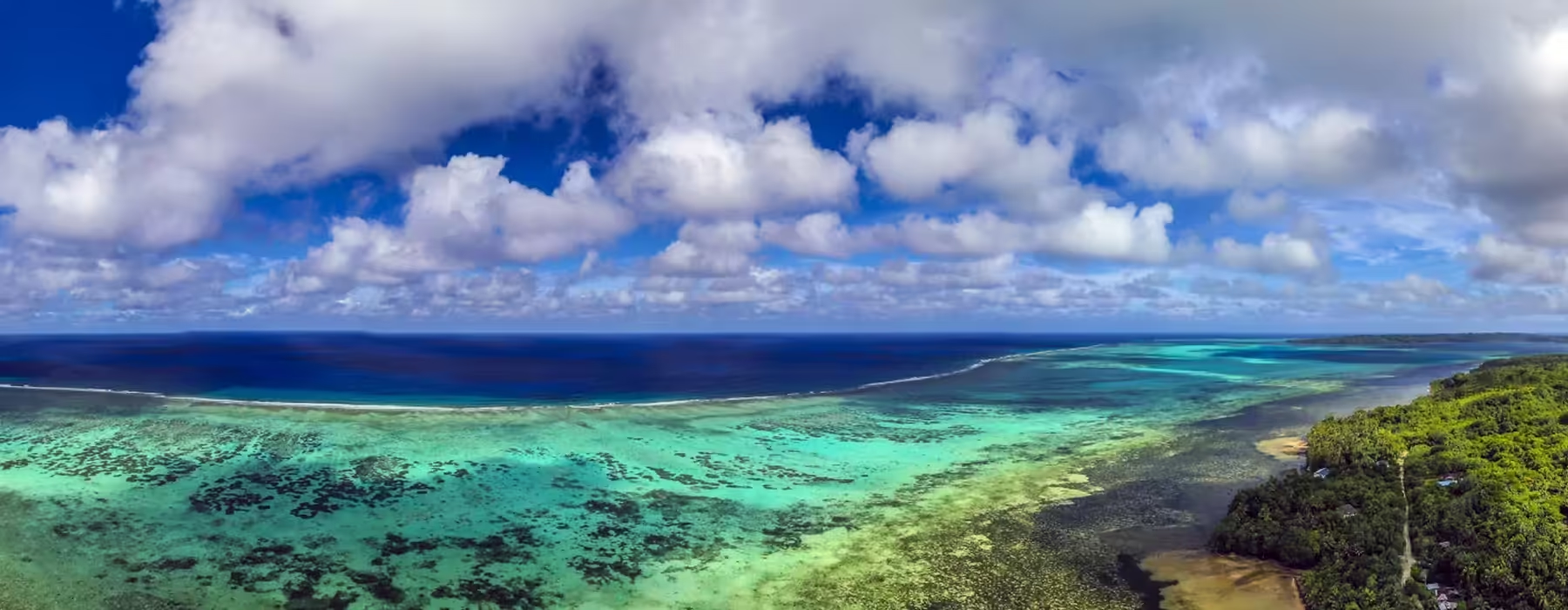Yap Nature & Wildlife
Flora

 Visitors to Yap are often struck by the diversity of island flora. Flowers, fruits, coconut trees and strong woods seem to be everywhere and growing with only the least bit of human assistance. In truth, Yap’s climate is conducive to growing a wide range of fruits, vegetables and flowers, but, the limited amount of arable land, especially in the Outer Islands, puts serious limits on the ability of the Yapese to exploit the island’s climatic advantages. A wide variety of colourful flowers grow wild in Yap and the Outer Islands and are used by young girls to make the fragrant, beautiful and intricate leis or marmars that Yapese and visitors all wear around their necks and heads.
Visitors to Yap are often struck by the diversity of island flora. Flowers, fruits, coconut trees and strong woods seem to be everywhere and growing with only the least bit of human assistance. In truth, Yap’s climate is conducive to growing a wide range of fruits, vegetables and flowers, but, the limited amount of arable land, especially in the Outer Islands, puts serious limits on the ability of the Yapese to exploit the island’s climatic advantages. A wide variety of colourful flowers grow wild in Yap and the Outer Islands and are used by young girls to make the fragrant, beautiful and intricate leis or marmars that Yapese and visitors all wear around their necks and heads.
Coconut groves tend to occupy the coastal flats, while nipa palms, mangroves and taro patches tend to occupy the more-muddy shoreline areas. Forest trees include breadfruit, banyan, mango, Tahitian chestnut and custard nut. Betel nut (Areca) palms and citrus trees are also common. In the mountainous regions there are huge thickets of bamboo and wild hibiscus, as well as massive trees like the Tamani which can grow as large as five feet in diameter. Most of the wood for housing projects and traditional canoes are hewn here and are selected based on things like resistance to termites and buoyancy. Taro, yams, bananas, sweet potatoes, breadfruit, papaya, tapioca, sugar cane, cabbages, Cancun squash, pumpkin, melons, guava, pineapples and passion fruit are common throughout the Yap Proper islands and make up the staples of the Yapese diet.
Fauna
 There are very few mammals in Yap State other than man. According to scientists, fruit bats or flying foxes are the only mammals to arrive in Yap independent of man. They are common and are hunted for food (bat is considered a delicacy by many Yapese). Other common animals include pigs, dogs and cats. Cattle have been introduced to the island on several occasions, but few Yapese consider them worth the trouble to raise. There are many geckos and large monitor lizards in Yap, but there are no snakes or crocodiles.
There are very few mammals in Yap State other than man. According to scientists, fruit bats or flying foxes are the only mammals to arrive in Yap independent of man. They are common and are hunted for food (bat is considered a delicacy by many Yapese). Other common animals include pigs, dogs and cats. Cattle have been introduced to the island on several occasions, but few Yapese consider them worth the trouble to raise. There are many geckos and large monitor lizards in Yap, but there are no snakes or crocodiles.
The Japanese introduced toads to Yap to control the insect population, but with few natural predators they have become a major nuisance.
In terms of bird life, there are 22 species that are resident on Yap including three endemic ones: the Plain White-eye, the Olive White-eye and the Yap Monarch (pictured here). Yap's lush tropical forest, grassland, savanna and scrubby brush and low-lying wetlands are particularly important to migratory birds and up to 46 species make the islands their temporary home.
Sea turtles can be found in the Outer Islands and along the walls of Yap's reef. Turtles are considered a delicacy, but there are strict traditional rules governing the catching and eating of turtle which limit the numbers of turtles killed. The Yapese do not catch turtles for their shells, although for practical reasons they do make handicrafts and jewellery out of the shells of turtles that have been caught for consumption.




